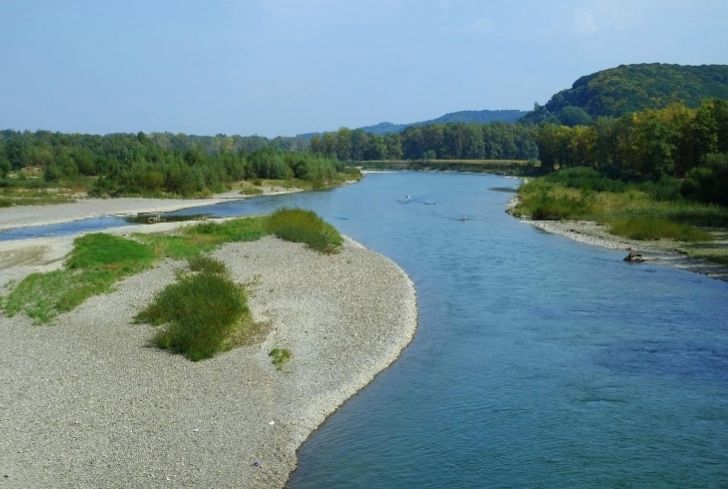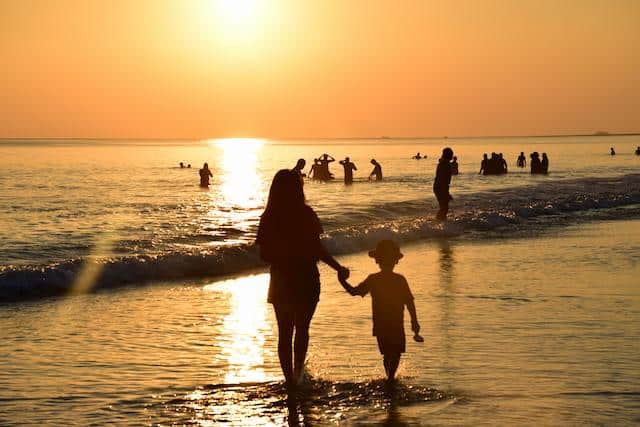5 Oceans of the World (Indian, Atlantic, Arctic, Pacific & Antarctic)

Up to the present time, when it comes to discussions about the earth’s surface cover, most of it is covered by water. About 70% of the entire earth’s surface is overlaid with water, most of which are the oceans. Out of the total water surface on earth, more than 96% is the ocean’s salty water.
The oceans are large masses of water bordering the continents. Even though they are all interlinked, they are predominantly categorized into five oceans as follows; the Atlantic Ocean, the Pacific Ocean, the Indian Ocean, the Southern Ocean, and the Arctic Ocean. Each of these oceans has distinctive characteristics and are spread across the seven continents of the world.
List of 5 Oceans of the World
Here are the details describing the five oceans of the world along with their area and volume size that provide a deeper comprehension of them.
1. The Pacific Ocean | Area: 161,760,000 km2 , Volume: 660,000,000 km3
The Pacific Ocean is the largest of all the oceans. Its location is between the eastern coastlines of African and Asia and the western coastlines of the American landmass. It is also bounded by the Antarctic Ocean in the south and the Arctic Ocean in the north.
The Pacific Ocean extends to about 162,200,000 square kilometers and it also has the longest shoreline that totals to approximately 135,663 kilometers.
Of all the ocean waters, the pacific constitutes roughly 46% and covers more than a third of the total surface area. Due to this, it is larger than the landmass area on the earth’s surface combined. The equator passes in the middle of the Pacific Ocean divides it into the South Pacific Ocean and the North Pacific Ocean. The Pacific Ocean has very limited occurrences of damaging ocean currents or movements, which makes it a peaceful ocean.
Some of the current environment concerns include endangered marine species such as seals, whales, turtles, sea otter, dugong, and sea lion; and oil pollution in the South China Sea and the Philippine Sea.
2. The Atlantic Ocean | Area: 85,133,000 km2 , Volume: 310,410,900 km3
The Atlantic Ocean is defined as the second largest ocean in the planet with an area of about 106,400,000 square kilometers. It is surrounded by Europe and Africa in the east and by America in the west. The Atlantic Ocean is made up of the Baltic Sea, Caribbean Sea, Mediterranean Sea and the Gulf of Mexico.
The Atlantic Ocean was highly known as a voyage sea up to the 15th Century thus having a historical marking for colonization and spice trade. It also spreads out to the Antarctic Ocean in the south and the Arctic Ocean in the north.
The Atlantic Ocean is divided by the equator into north and south Atlantic. The area adjacent to the north of the equator, between South America and Africa, is termed as Central Atlantic. The water in this area is completely different from the waters in the northern part, which is between North America and Europe. The ocean hosts many aquatic species including the sperm whale which is recorded as the largest living-toothed creature.
The Atlantic Ocean is also the saltiest of all the oceans and this salinity is mainly contributed by the process of precipitation, evaporation, sea ice melting and river inflow. The water in the South Atlantic circulates in an anti-clockwise direction, whereas in the North Atlantic the circulation is in a clockwise direction. This phenomenon is owed to the Coriolis Effect.
Some of the environmental concerns include endangered marine species such as seals, manatee, turtles, whales, and sea lions; driftnet fishing which leads to overfishing; municipal sludge pollution off southern Brazil, eastern U.S., and eastern Argentina; oil pollution in the Gulf of Mexico, Mediterranean Sea, lake Maracaibo, and the Caribbean Sea; Sewage pollution and industrial waste from the North Sea, Baltic Sea, and the Mediterranean Sea.
3. The Indian Ocean | Area: 70,560,000 km2 , Volume: 264,000,000 km3
The Indian Ocean is the third largest ocean on the planet. It covers an expanse of about 73,556,000 square kilometers. Just like the Atlantic Ocean, the Indian Ocean was highly known as a voyage sea up to the 15th Century that gave it a historical marking for colonization and spice trade. For this reason, the Indian Ocean has a great record of all sorts of humankind, all the way through world history.
The Indian Ocean is encircled by the eastern coast of Africa which constitutes the shores of the Middle East and India in the north. Australia and South East Asia separate the Indian Ocean from the Pacific Ocean. Also, the Indian Ocean has plentiful exotic animal and plant species.
The ocean also makes up around 20% of all the water on the earth’s surface and it’s a major sea route connecting the Middle East, Africa, and East Asia with Europe and America. Up to 40% of all offshore oil production is from the Indian Ocean. Beach sands are also exploited by a majority of the countries bordering the Indian Ocean particularly because they are rich in heavy metals.
The Indian Ocean is as well relatively warm compared to other oceans, which limits the growth of phytoplankton. Various ports have also been set up along the coasts of the Indian Ocean namely the Port of Singapore and The Mumbai Port. Gulfs, bays, and straits are also numerous within the spreads of this ocean.
Some of the environmental concerns here include endangered marine species such as seals, whales, turtles, and dugong; and oil pollution in the Persian Gulf, Arabia Sea, and the Red Sea.
4. Southern Ocean | Area: 70,560,000 km2 , Volume: 310,410,900 km3
The Southern Ocean is the fourth largest in the planet and only covers an area of about 20,327,000 square kilometers. It is widely known as the ‘Antarctic Ocean’ since it is situated next to the South Pole.
One important aspect of the Antarctic Ocean is that is has a tremendous influence on the planet’s weather patterns. It also joins the waters of the Indian Ocean, Pacific Ocean, and the Atlantic Ocean with a continuous easterly current.
In the ocean zone, the warmer waters of the subantarctic mix with the cold northward flowing waters in the Antarctic. Numerous kinds of marine animals live and depend on the phytoplankton in the Antarctic Ocean, making it an ocean rich in diverse marine species. Besides, the Antarctic Ocean is a depository of natural resources including valuable minerals and massive oil and gas fields.
The biggest environmental problems in the Southern Ocean are the impacts of global warming, overfishing, climate change, and ocean currents.
5. The Arctic Ocean | Area: 15,558,000 km2 , Volume: 18,750,000 km3
The Arctic Ocean is the shallowest and smallest of all the oceans in the planet, more than five times smaller than the Atlantic and Indian oceans. Its surface area is about 13,986,000 square kilometers and it mostly lies in the Arctic Circle.
The Arctic Ocean is bordered by the North American and the Eurasian continents. Most of the time throughout the year, the Arctic Ocean is covered with thick mountains of ice and it even remains impassable during summer.
The ocean is situated in the Northern Hemisphere and is commonly perceived to be the northernmost part of the entire World Ocean. Since ice cover freezes and melts occasionally, the surface temperatures and the salinity widely vary.
Compared to the other oceans, its salinity is the lowest as it has limited connections to other oceans, a lower amount of evaporation, and a continuous inflow of fresh water from streams and rivers. Plant life is relatively small in the ocean. Phytoplanktons are common.
Some of the pressing environmental issues in the Arctic Ocean include endangered marine species such as whales and walruses; and a fragile ecosystem that slowly adjusts to damage or disturbance.






